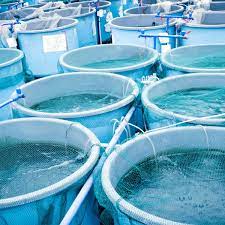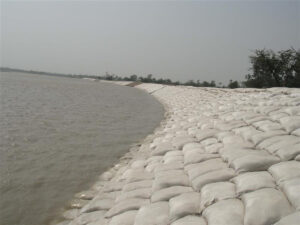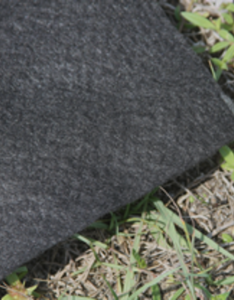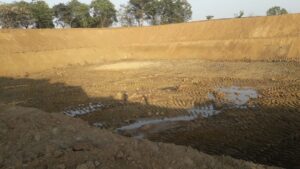Biofloc Fish Farming

Biofloc technology is a technique for enhancing the quality of water by balancing carbon and nitrogen in the system. The technology functions on the flocculation principle. Biofloc was introduced as a technique to promote intensive fish production in a limited region. The prime purpose of Biofloc is to recycle nutrients by converting unused feed and waste organic matter into food utilizing probiotics and carbon sources. It was built as a substitute to open pond fish farming and to protect against the introduction of diseases into the water.
It is an initiative that is not just cost-effective but also sustainable and eco-friendly. In India, the population is expanding every day and the demand for aquaculture is as well increasing with it. India contributes to around 6% of global fish production. But the expansion of aquaculture is circumscribed mainly due to two reasons, first, as it put pressure on the environment through discharging waste materials into the water bodies, and second, due to the dependence on fish oil and fish food.
Biofloc technology works as a solution to these problems as it is a profitable method of intensive fish farming because it controls the water quality and generates proteinaceous feet in situ. Biofloc act is a wastewater treatment method that gives aquatic animals nutrition.
Requirement for Biofloc technology:
The fishery is one of the greatest food sources in the world. The fishery is done by developing and harvesting fish for food use. It is one of the best sources of employment. As the demand for seafood consumption is expanding, the demand for aquatic products used by the industrial sector for conversion into fish meal and fish oil products is as well increasing. Therefore we can say that the consumption of fish is expanding with the expansion in population.
But the growing demand for fish can not be fulfilled by traditional fish farming methods. With the changing times fishing industry has adopted a more unique and efficient way of raising and harvesting fish to sustain its needs. India is a growing country and there are loads of poor farmers who earn their livelihood through fish farming. Still, traditional farming becomes costly for them, and due to government limitations, it becomes difficult for them.
Growth performance in Biofloc system:
The performance of aquatic animals in a Biofloc system is examined by the following parameters, like the growth of fishes based on length and weight at periods of every 15 days. You can analyze by weighing 10 fish from every treatment that replicates randomly. Fishes have to starve overnight ahead of checking their weight.
Fish length is measured utilizing a measuring scale and the weight is measured utilizing an electronic weight balance. The growth performance is analyzed by using various formulas with the help of parameters such as specific growth rate (SGR), percentage of weight gained (PWG), feed conversion ratio (FCR), protein efficiency ratio (PER), biomass, and survival rate.
Top 3 Materials Required For Biofloc Farming
There is a requirement for different materials. Some are simply available in the market while some materials are available in particular or related areas.
The essential materials to start Biofloc Fish Farming are:-
1. Tanks
The first thing we require when we start biofloc is fish farming tanks. Tanks are the main requirement. The base or floor of the Biofloc tank is made up of elements like bricks, sand, cement, and sometimes mud with the accurate provision of an outlet.
2. Outlet
The outlet assists in managing the water level inside the tank. It is made from the base of tanks with the assistance of pipes. In case there is too much water or during the fish harvesting, we can allow the water out of our tanks.
3. Oxygen Supplier (Tank)
This is the most important thing we require during Biofloc fish farming. In Biofloc, we culture a huge number of fish in small areas of tanks. That’s why there is a shortfall of oxygen for fish. Only dissolved oxygen cannot fulfill the requirements of all the fish inside the tank.
Conclusion
Biofloc can be considered as a budget-friendly creative technology where the toxic material is converted into proteinaceous feed. Biofloc technology application does provide good benefits in improving aquaculture production that could contribute to the achievement of sustainable development goals.
Although Biofloc technology is still in its infant stage it might be developed and performed in unification with other food production and does promote beneficial integrated systems, focusing on producing more food and feed from a similar area of land with fewer inputs. This technology could result in great productivity with less impact on the environment. Biofloc technology is a green approach in aquaculture called by different names such as zero exchange autotrophic(ZEA), single-cell protein production system(SPPS), etc.
Biofloc technology is at the forefront of fish production many people who have invested in this method have gained heavily from it as it has improved production and profit.



